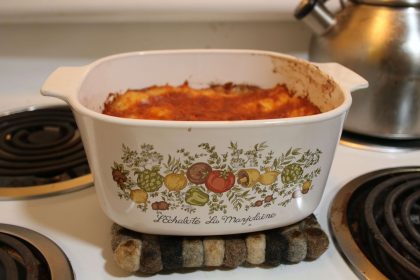I always like to think that baking soda is my baking soulmate. Whether it’s in a cake, biscuit, cookie, or muffin, no sweet treat is complete without that special something that only baking soda can bring. But what exactly is baking soda, and what is the pH of baking soda?
First of all, let’s define what pH is. pH stands for ‘potential hydrogen’ and it’s a measure of how acidic or alkaline a solution is. A pH of 7 is neutral, while anything below 7 is acidic and anything above 7 is alkaline.
- Understanding pH Of Baking Soda?
- Factors affecting the pH of baking soda
- What is baking soda?
- What is pH?
- What is the pH of baking soda?
- Can the pH of baking soda vary?
- Can baking soda be used to adjust pH levels?
- Can I use baking soda to test pH levels?
- Is baking soda safe for consumption?
- Can baking soda be used for cleaning purposes?
- How should I store baking soda to maintain its pH level?
- Can baking soda lose its alkalinity over time?
Baking soda or sodium bicarbonate is a naturally occurring mineral crystalline and is considered an alkaline compound. That means its pH should be higher than 7. Most people think that baking soda is a single compound, but it’s actually made up of sodium, hydrogen, and carbonate ions. What this means is that baking soda can help neutralize acids.
So, what is the pH of baking soda? The pH of baking soda is, on average, 9. This means that baking soda is slightly more alkaline than neutral.
I have to admit, I was surprised at first when I discovered the pH of baking soda. I thought it would have a much higher pH, given that baking soda is known for its ability to neutralize environmental acids. It’s like when I make my delicious chocolate chip cookies. Despite adding all kinds of acidic ingredients like eggs and cocoa powder, baking soda still manages to raise the pH of the batter and neutralize the acid.
This is why baking soda is such a necessary component in almost all baking recipes. Not only does it help to neutralize environmental acids, it also helps give your baking that fluffy and light texture that you so often crave.
Think about that individual crumb of a muffin you had at Aunt Jenny’s last summer and how light it was compared to traditional muffins – that was probably because she was using baking soda in her recipe! Additionally, if you’re curious about the calories in a McDonald’s large fry, I pinned a superb article.
But baking soda isn’t just good for baking – it can be used for medical and even household cleaning purposes. It’s amazing how versatile baking soda truly is. For example, if you have a sore throat, you can mix a teaspoon of baking soda with 8 ounces of water and drink it to help soothe it. You can even use baking soda to wash vegetables or scrub your pots and pans clean!
So, next time you’re inspired by that smell of freshly baked goods, remember you can thank baking soda. With its incredible ability to neutralize environmental acids and give baked goods that light texture, baking soda truly is a miracle ingredient. And don’t forget, the pH of baking soda is, on average, 9.
Understanding pH Of Baking Soda?
First thing’s first: what is pH? Well, pH stands for “potential hydrogen” and is a measure of acidity and alkalinity in liquid solutions. A substance with a pH of 7 is neutral, while anything with a pH lower than 7 is considered acidic and anything with a pH higher than 7 is basic, or alkaline. Carrying that thought, if you’re interested in the amount of calories in birria tacos, I pinned an amazing article lately.
On the pH scale, baking soda has a pH level of around 8.1, making it an alkaline ingredient. This is something that I just recently discovered in my kitchen experiments. After baking a dozen loaves of bread and reading dozens of baking books, I finally had the ah-ha moment – baking soda has a lower pH.
Understanding the pH of baking soda can help you get the most out of your baking projects. Considering its alkaline nature, it can actually neutralize acids found in ingredients such as buttermilk and sour cream, reducing the acidity of the recipes and giving you the perfect balance.
Before I came across this knowledge, I was never happy with my results – everything was either too soggy or too dry, or not sweet enough, yikes! Keeping that in view, if melting queso fresco is something that grabs your attention, I just pinned a great article. There was always something “off” about my treats and I just thought that my baking skills weren’t up to par, when in reality I didn’t understand the pH of baking soda and its effects on my recipes.
For instance, if you’re baking a cake and use buttermilk or sour cream as one of the ingredients, you can counteract the acidity of those ingredients by adding baking soda. This helps to lighten the cake and makes it more airy, while also making the flavor more mellow. Without the baking soda, the cake would become overly dense and probably taste too acidic.
When baking cookies, the baking soda also plays an important role. It acts like a leavening agent, meaning it helps the cookie dough to rise, making the cookies fluffy and soft. Plus, it can help combat a strong acidic taste and give the cookies the right balance of sweetness and flavor.
Now that you understand the basics of baking soda’s pH, how can you incorporate this knowledge into your recipes? Quite simply, adjusting the pH of baking soda can help you create the perfect flavor balance for your baked goods. Here’s a basic baking soda “pH recipe” that you can follow:
– Start with 1 Teaspoon of baking soda per 1 Cup of flour
– Taste-test the dough to see if the flavor balance is right
– Add a 1/4 Teaspoon of baking soda for every teaspoon of acidic ingredient
– Taste-test again
Remember, the pH of your recipe is important and can drastically change the flavor. Too much baking soda can make the food overly alkaline, and too little can leave it overly acidic. Play around with the acidic ingredients in the recipe and adjust the baking soda accordingly.
Following that, does the thought of microwaving Uncle Ben’s rice cross your mind? I just wrote an article about it – so let’s carry on.
Factors affecting the pH of baking soda
As all of you foodies out there know, baking soda is one of the main ingredients for creating tasty baked treats like cakes and cookies. It’s a combination of sodium bicarbonate and a weak mineral acid, so when it’s mixed with liquids it creates bubbles of carbon dioxide. These bubbles help to create a nice rise in baking recipes, and that’s why it’s so important!
But the pH of baking soda matters too. The pH is a measure of how acidic or alkaline a substance is. Baking soda is considered to be a very weak alkaline and has a pH around 9 for the commercial brands you can get in supermarkets. But this can change over time. Here’s how.
The Temperature
The first factor that can affect the pH of baking soda is temperature. Hotter temperatures usually make substances more alkaline, and baking soda is no exception. This is why it’s important to store baking soda at room temperature. If it gets too hot, the pH can end up being too high, and your baking recipes won’t rise properly. I’ve seen this happen first-hand with some of the cookies I’ve made – they didn’t rise as they should have!
Moisture
Moisture can also have an affect on the pH of baking soda. When baking soda is exposed to air, it tends to absorb moisture from it. This can make it more acidic, and this is why it’s important to store it in an airtight container. I’ve seen the effects of too much moisture on baking soda first-hand too. I made a batch of cupcakes for a birthday one time, and they didn’t rise as much as they should have, probably because the baking soda wasn’t stored properly and had absorbed too much moisture!
Chemicals
Finally, certain chemicals can react with baking soda and change its pH as well. This includes things like chlorine and other cleaning products. I had an experience with this once when I was making a cake for a friend. I put a scoop of baking soda into the mix, only to realize that I’d used some that was stored in a cupboard near the sink and had been exposed to some cleaning products.
The cake didn’t rise properly, and it was only then that I realized it was because the baking soda had been affected by the chemical fumes!
So, there you have it! Those are the three main factors that can affect the pH of baking soda. Keep an eye on these three things and you should be able to use baking soda effectively for all of your baking recipes.
What is baking soda?
Baking soda, also known as sodium bicarbonate, is a white crystalline powder commonly used in baking and cooking. Moreover, if you wish to know if provolone cheese can be frozen, I wrote a remarkable article on that recently. Nevertheless, let’s renew our conversation. Its unique chemical properties make it an essential ingredient in various recipes, as it acts as a leavening agent, producing carbon dioxide gas when combined with acidic ingredients.
What is pH?
pH is a measure of how acidic or alkaline a substance is. It is determined by the concentration of hydrogen ions in a solution. The pH scale ranges from 0 to 14, with 7 being neutral, values below 7 indicating acidity, and values above 7 indicating alkalinity.
What is the pH of baking soda?
Baking soda is alkaline in nature, and its pH level typically ranges between 8 and 9. This makes it slightly basic on the pH scale. The alkalinity of baking soda is what contributes to its ability to neutralize acids and create a reaction in baking, resulting in fluffy cakes, cookies, and bread.
Can the pH of baking soda vary?
The pH level of baking soda can vary slightly depending on factors such as the brand, storage conditions, and exposure to air. However, in general, baking soda maintains its alkaline properties and falls within the 8 to 9 pH range.
Can baking soda be used to adjust pH levels?
Indeed! Baking soda can be used to adjust pH levels in certain situations. Due to its alkaline nature, it can act as a buffer and help neutralize acidic substances. However, it’s important to note that baking soda should be used judiciously and in appropriate quantities, as excessive use can lead to undesirable effects.
Can I use baking soda to test pH levels?
While baking soda is not the most accurate method for testing pH levels, it can provide a rough estimate. Mixing baking soda with a liquid and observing the reaction can give you an indication of whether the substance is acidic or alkaline. However, for precise pH measurements, it’s best to rely on specialized pH testing equipment.
Is baking soda safe for consumption?
When used in moderation and as directed, baking soda is generally considered safe for consumption. However, excessive consumption or misuse can lead to potential health risks. It’s important to follow recommended guidelines and consult with a healthcare professional if you have specific concerns.
Can baking soda be used for cleaning purposes?
Absolutely! Baking soda’s alkaline properties make it an effective and environmentally friendly cleaning agent. Its ability to neutralize odors, remove stains, and act as a gentle abrasive makes it a versatile tool for cleaning various surfaces and household items.
How should I store baking soda to maintain its pH level?
To preserve the alkaline properties of baking soda, it’s best to store it in a cool, dry place, away from moisture and humidity. Sealing it tightly in an airtight container can also help maintain its freshness and pH stability.
Can baking soda lose its alkalinity over time?
Over an extended period, baking soda can gradually lose its alkaline properties, resulting in a decrease in pH level. However, if properly stored and used within its expiration date, the change in pH should be minimal, allowing baking soda to retain its effectiveness in baking and other applications.





